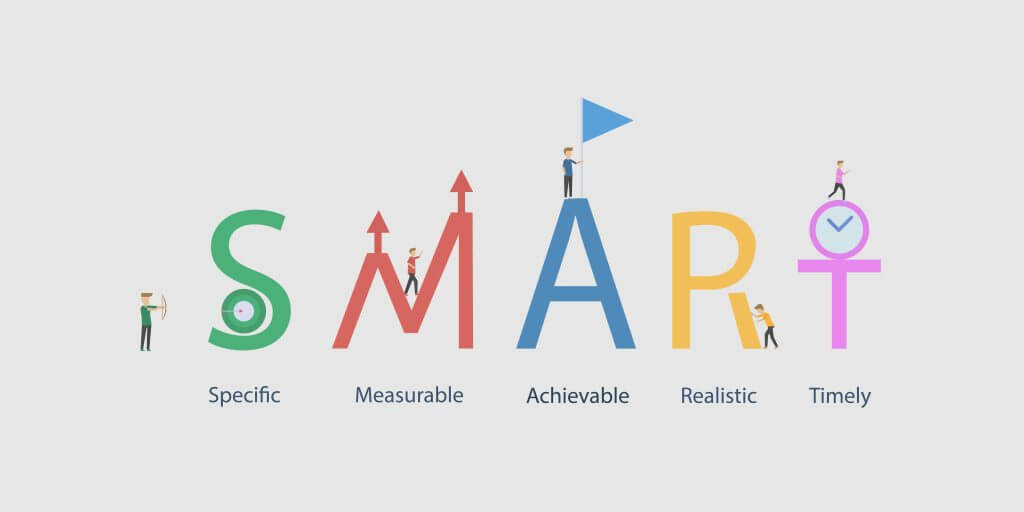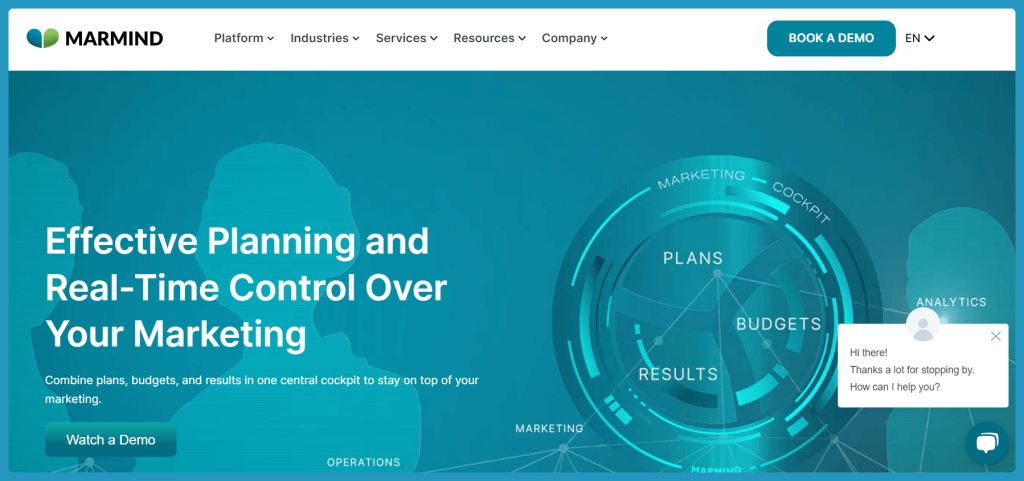Most marketing managers get excited about target audience advertising campaigns, engagement, social media strategies, or technical SEO, but they’re less thrilled when budgeting season comes around.
Sure, it isn’t glamorous, but budgeting is at the heart of your marketing. And it comes down to one thing: planning to spend your money on the ideal marketing channels to reach your target audience effectively.
This article is a mini guide for allocating your marketing budget. It will help you find the right starting point and guide your budget allocation journey while focusing on effective engagement strategies.
Keep reading for a short and sweet guide, or download our free ebook that dives deeper into the topic.

How to allocate your marketing budget
Before allocating your marketing funds, you must know your overall marketing budget. You determine your marketing budget according to your goals and how much you’re willing to invest to drive engagement.
According to a Gartner survey, companies spent around 9.5% of their total revenue in 2022. While you may shrug at this figure – given that every company is different – it’s a good benchmark you can use to plan your marketing budget.
Check out the example:
A startup looking for fast growth may employ a more aggressive approach. It’s common for startups to invest 15-20% of their revenue in their marketing to effectively reach their target audience.
Your marketing budget depends on what you’re trying to accomplish, how much you have to spend, and your sentiment on market trends. Still, your marketing budget will likely fall between 8-12% of your overall revenue.
Marketing budget allocation in 6 steps
You’re ready to allocate your budget once you’ve decided how much you plan to spend on your marketing. Essentially, you can break down your allocation process into ten easy-to-execute steps.
1. Set marketing goals
Before you set out to do anything, you must have clear goals. Budgeting is no different. You must define and clearly articulate what you’re trying to achieve, of course, with your target audience in mind.
You’ll want to write down SMART goals and tape them to your computer screen. They will serve as your true north throughout your marketing budget process. It’s the most critical step on this list because it should guide every budgeting decision you make.
S – Specific: choose only a few goals and explain them clearly and concisely
M – Measurable: your goals should be measurable and preferably trackable
A – Achievable: look at where you are now and imagine what is achievable
R – Realistic: your goals must be relevant to your company, and its overall success
T – Timely: goals are just goals if you don’t set a time limit on them
Example:
Obtain 10% more free trial signups by increasing organic traffic by 8% in the next 3 months.

2. Identify long-term goals
What does success look like to you? Where do you want to be by the end of the quarter? Where should you be by the end of the year?
Asking yourself these questions will help you decide which marketing channels will help you accomplish your goals. Keeping long-term goals top-of-mind is an excellent way to guide your budgeting process and help you make the proper allocation decisions to drive engagement, for instance.
You should also reevaluate your buyer’s journey and sales funnel and determine where you need to improve most to obtain your desired results.
For example, if you want to increase your website conversion rate, you may need outside help to optimize your sales copy and customer touchpoints.
3. Use marketing tactics
Before you allocate your marketing budget, you must use the right tactic. One simple budgeting tactic that works for most budgeting scenarios is the 80-20 rule.
The rule tells us to:
- Invest 80% of our budget in strategies that work and 20% in strategies that optimize growth.
- The 20% can be broken into 10% for new strategies and the other 10% for entirely experimental strategies.
On top of that, monitoring key marketing metrics should be one the basis on what further tactics to use.
4. Determine potential ROI
Knowing your future ROI is challenging, even when using the most advanced scenario planning methods. Still, you can look back on your company’s past performance and get a good idea of how much you’ll make if things remain the same. While it won’t be exact, it should give you a good estimation.
From there, you can add your future costs. They should be linked to your goals and what you want to improve. Here are some things to consider:
- Will you hire new talent?
- Will you add to your marketing stack?
- Will you spend more on PPC ads?
- Will you spend more on content creation?
- Will you attend events?
5. Understand the competition's spend
It will provide you with insights for shaping your own marketing strategy. Research market research to see how similar businesses or direct competitors distribute budgets among:
- digital marketing,
- content marketing,
- public relations,
- paid advertising,
just to name a few.
It doesn’t mean copying them, but identifying market opportunities and gaps you could fill.
Analyzing competitive marketing activities also offers a clear view of what’s resonating with your target audience.
6. Review previous marketing investments
Before moving forward, evaluate your previous marketing investments.
Examine the returns from various marketing strategies you’ve employed in the past.
Did video marketing yield a higher lead conversion rate than sponsored web content? Did SEO or search engines optimization deliver more value than social media ads?
Answers to these questions will give you a solid foundation to prioritize your marketing spending in the coming period. Also, looking back offers the chance to eliminate wasted expenses and refine strategies that underperformed.
7. Engage key stakeholders and the marketing team
A successful marketing plan is often a collaborative effort.
Engage marketing leaders, marketing teams, and other key stakeholders in the budgeting process. Their insights and experiences can offer valuable perspectives on:
- market trends,
- innovative marketing initiatives,
- and customer preferences.
Including the marketing staff in this process ties business goals with marketing efforts and helps develop a cohesive and effective approach to reaching paying customers.
8. Be flexible
The business landscape changes, and so should your marketing strategy. As you allocate your marketing budget, leave some flexibility for changes based on market dynamics.
For instance, if a new digital channel emerges as a significant player, you might want to reroute funds to explore it. Or, if a particular marketing campaign is yielding exceptional results, it may be beneficial to inject more funds into it.
Monitor your actual spending against your marketing budget template and tweak as needed.
9. Allocate your marketing spending
After gathering all the above, you’re ready to divide your marketing budget. Remember to make your SMART goals the deciding factor that guides your allocation process and target audience engagement.
Here are some of the channels you’ll have to consider:
- SEO
- Web design
- PPC ads
- Email marketing
- Advertising campaigns
- Content writing
- Social media marketing
- Copywriting
- Networking events
Marketing is an ever-evolving thing that includes many variables and moving parts. Similarly, budgeting is not a constant. It’s a time-consuming experiment that requires patience and a good deal of foresight and understanding of your target audience’s preferences.

10. Stay on track
You’ve allocated your budget, so now what?
You have to track your spending. It’s the only way to see if your budget allocation was effective in reaching your target audience.
Track the right key performance indicators (KPIs) to stay on top of your budget in real-time.
Here are 7 marketing budget KPIs you should track:
- Sales growth
- Customer Acquisition Cost (CAC)
- Customer Lifetime Value (CLV)
- Return On Ads Spend (ROAS)
- Return On Marketing Investment (ROMI)
- Lead Conversion Rate
- Conversion Rate by Marketing Channels
Optimizing your marketing budget with MARMIND
Building a marketing budget is challenging when you don’t have the right tools.
MARMIND is the only MRM that combines planning, budgeting, and tracking in one intuitive platform.

From workflows and spending limits to tracking KPIs and AI-driven resource allocation, Marmind makes budgeting easier and streamlines your entire marketing effort.
But don’t take our word for it. Marmind made the highly exclusive 2022 Forrester WAVE report.
Last Thoughts
Unfortunately, there isn’t a perfect formula for allocating your marketing budget. But the steps above are excellent for finding a formula that works for your company. However, using a budget planning tool like Marmind for that is always a good move anyway.
It’s your job to key in on that sweet spot that will optimize and grow your marketing effort.
FAQ on how to allocate your marketing budget
Depending on the company's success goals and target audience, different strategies might emphasize digital marketing, public relations, or trade shows. For optimal results, marketing investments must be channeled correctly to reach target customers.
Absolutely! Small businesses can greatly benefit from marketing budget templates. Templates offer a structured framework and make it simpler for small business owners to outline their marketing activities, estimate costs, and track actual spending against projections.
A good template simplifies the budgeting process so that every dollar contributes to the business's goals.
Yes, dedicating funds to market research and focus groups before a major marketing campaign can be extremely beneficial.
It helps companies understand their target audience better, refine their marketing message, and identify opportunities for better engagement.
Having this insight can greatly improve the effectiveness of the subsequent campaign, which means the company gets better results from their marketing spend.
Autor

Peter Fechter
Peter is Digital Marketing Manager at MARMIND and mainly responsible for website and lead management. When he's not busy creating content, he is developing new strategic approaches for campaign planning.
In this video, we show you the 5 main features of MARMIND’s budget & cost module – and how it can be used in the best way for your marketing purposes:
- Top-Down Budget Planning
- Spend Management & Forecasting (Bottom-up Basis)
- Set up reconciliations from actual costs to planned/committed costs
- How to set up scenarios
- How you can integrate budget forecasts, ROI and performance KPIs into other views and into reports












